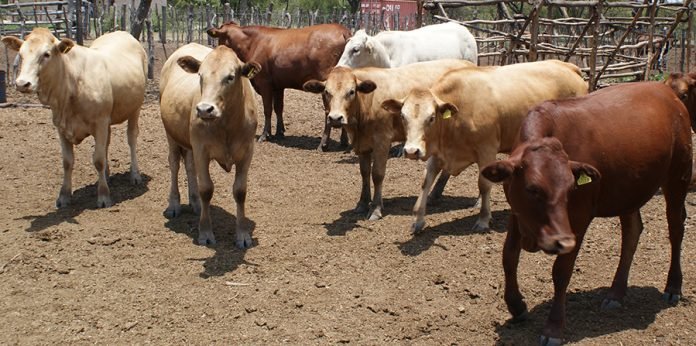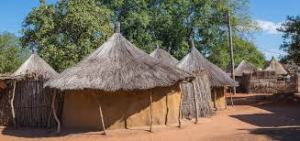
” I already know about this place. I visited it in the pictures. I have seen these round rocks and this curved dwala (ruware) in the pictures”, I quipped in answer to a question from a colleague as we were standing right at where Cecil John Rhode’s remains are purportedly lying. He had asked me a question as to whether I had visited the area before. His was an air of how the tour was interesting and informative. I then laughed, and went on to tell him that there wasn’t anything different from what I had seen virtually except the breeze around and the lizards which seemed to have been accustomed to constant visits by people and no longer cared much whether they were around or not.
Today I want to reflect on the issue of Matobo hills in Matebeleland South province, on the southern part of Bulawayo. This area means many things to many people, including the people now called Shonas and Ndebeles.
Today, the area receives both white and black tourists. Many are driven by a desire to see where the grave of the founder of Rhodesia is. Some take it as part of a package of attractions in the Matopos National Park. Still others visit the area purely for sentimental and religious reasons.
In a school tour, I found myself at this site. I never cared to take a look at the welcome shed where information about the attractions is pinned. We trooped up the hill. I couldn’t help it but think of how Rhodes was portrayed as a very brave man who caused the Ndebele soldiers (amabutho) to drop their spears and rise to the arena for an indaba or meeting that led to a ceasefire in 1897. In our primary school books, obviously written by the white historians, Rhodes was the main character. In secondary school books which were written after 1980 and “decolonized”, I don’t remember this line to the cessation of the war being glorified. All the same, I could imagine, the hesitant warriors/indunas, one by one persuading each other to come out and sit down before Rhodes and a handful of white men. It is here, I hear, where the Ndebeles were pacified. At Malindidzimu or the View of the World.
Again, I couldn’t help it but model in my mind how, after the demise of Rhodes, and following his will, his remains were paraded in both Kimberly and Cape Town in South Africa before being carried by carts and railway through provinces to Mafikeng (at the rocks) in South Africa. The train proceeded through Botswana (Bechuanaland Protectorate) up to Bulawayo. On the day of burial in the Matobo hills, in 1902, at a site Rhodes had dubbed “The View of the World” and the locals knew as Malindidzimu, it is said the Ndebele warriors, who had had some half dozen years without their King Lobengula, gathered in the valley, and gave Rhodes a tribute, the Royal Salute, a preserve of deceased Amakhosi or Kings. “Bayethe!”. I could have heard an army of Ndebeles shouting, with a solemn but respectful intonation. In my mind I could not help it but think of how this could be followed by polished poets churning our words of praise to this “white Induna”.
Yes, that is me as I reflect on the life and death of Cecil Rhodes. A colleague, with a voice of a sozzled man retold of how Rhodes, one night, woke up in the night and nudged Leander Starr Jameson to wake up and only to be told about how lucky they were to be of the British race, “the finest flower of civilisation”. Suddenly, I thought of how Apollon Davidson quotes an account of how one dark night a friend visited Rhodes. He found him in a disturbed state having pushed a wooden piece of furniture against his door saying he had seen a ghost. Such was the man Rhodes, at least according to these sources. A deeply religious individual. An ambitious man who wanted to conquer Africa from Cape to Cairo. A strategist who quickly won over the diamond fields of Kimberly and was persistent in anything that he set his mind on. A person who struck strategic partnerships with the likes of the Beit brothers. A man who was an enigma as his sexual orientation was concerned. A man who had an eye for value. A man who was at “loss for words” in Britain in the inquest into Nehanda’s death. I could go on and on to summarize many of the views on this significant man in Africa’s recent history.
As I looked around from the vehicle we were in, I found myself questioning why of all places Rhodes chose to be buried in Matobo hills. Did he have an appreciation of beautiful landscapes? How did he discover this landscape far away from Bulawayo, by the standards of the day? Wasn’t there any decent cemetery in Bulawayo? I went on for minutes with these questions. Suddenly, I seemed to have got the answer. Read on.
The area of Matobo had been a place of interest from the times way before the Shonas, Ndebeles and the whites set foot in the land some described as Guruhuswa, between the Zambezi and the Limpopo. The area is home to rock art sites that are a testimony to it’s inhabitation by the San who were predominantly hunters and gatherers, and the Khoikhoi who were farmers. Pottery of the Bambata tradition, attributed to the the Khoisan, has also been collected from here. With the arrival of the “Shona” groups, over time, this area was then associated with the worship of Mwari. A shrine with the names Mathonjeni, Zame or Njelele and so on came into focus. When the Ndebele overthrew the Karanga/Kalanga tribes in the area around 1868, they took the worship system aboard. Thus the area became of spiritual importance to both major (in terms of population) groups of Africans on the Zimbabwe plateau.
As I was growing up, I remember hearing that there were people moving from door to door sourcing for rapoko, rukweza or zviyo for Mukwerera or doro remvura or beer for rainmaking. Without these, you were free to chip in with coins. The people would congregate in Mapanzure’s hill to ask for rain. The surviving varovora vaMapanzure (the women married into Mapanzure’s clan) would talk of how they went to Mapanzure’ s grave to sweep around it, supposedly appeasing the very important departed person just before the rain season. It is also said that rain-making ceremonies could also be done in a grove known as Rambatemwa. (Rambatemwa. A place where cutting of trees was/is prohibited; a triangular sacred place between two streams with a pool at the confluence where mermaids abode). The elders would then send one of their own to Mathonjeni in the Matobo hills with their request. In the early 80s, they would send one elderly man, slightly built and dark in complexion, in the person of VaDzviti. Such was the importance attached to Matobo hills.
Rhodes could have come to be convinced of the spiritual importance of the area to the people whose land he wanted to possess. Moreover, he was briefed as to how the “Molimo cult was responsible for the rebellion” of the Ndebeles and Shonas in the liberation wars. So why Rhodes of all places came to know of this area was through the stories of the worship of Mwari. Indeed, the place is beautiful, with a cooler climate and vegetation so far removed from the rest of Bulawayo and its environs. And he wanted to be associated with this place, aesthetically speaking. Another view is that that he wanted association with this place for religious reasons. Thus he wrote in his Last Testament and Will that he be buried at Malindidzimu. Not only him but the Allan Wilson-led group who died tragically at the hands of the Ndebele warriors, and other key figures. We noted how one of the graves had fresh stains, and my colleague said it was wine poured over there by fellow white pilgrims as part of religion.
That does it for today. Feel free to air your views in the comments section below.









